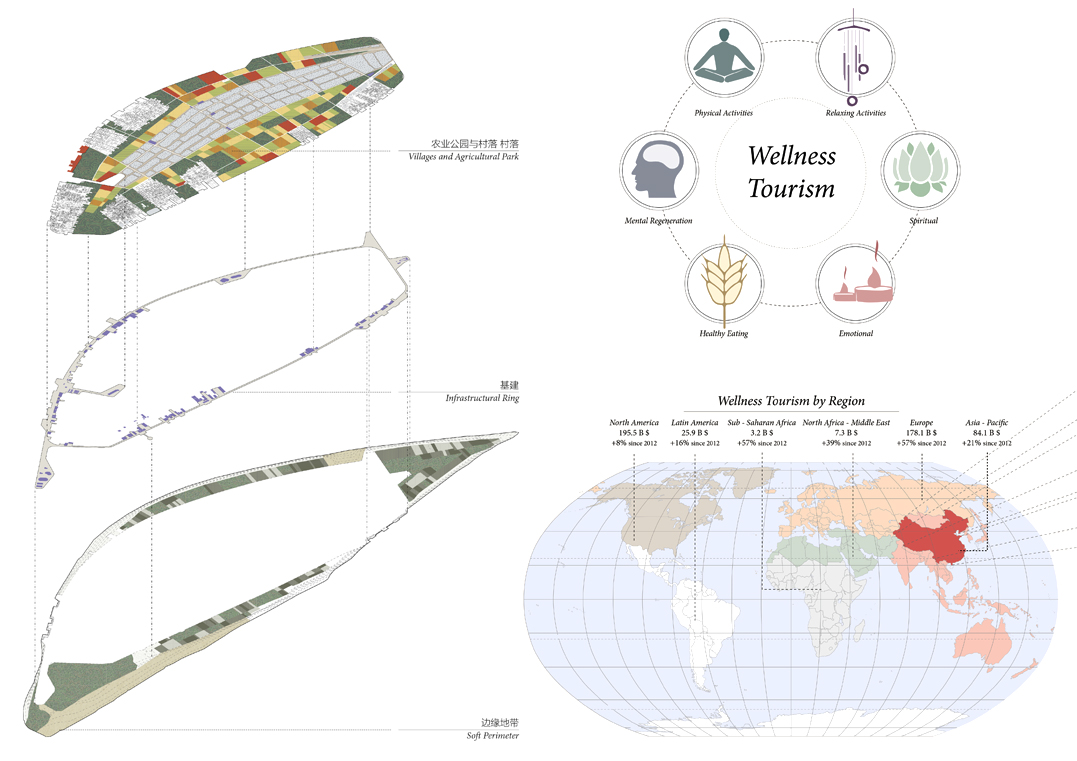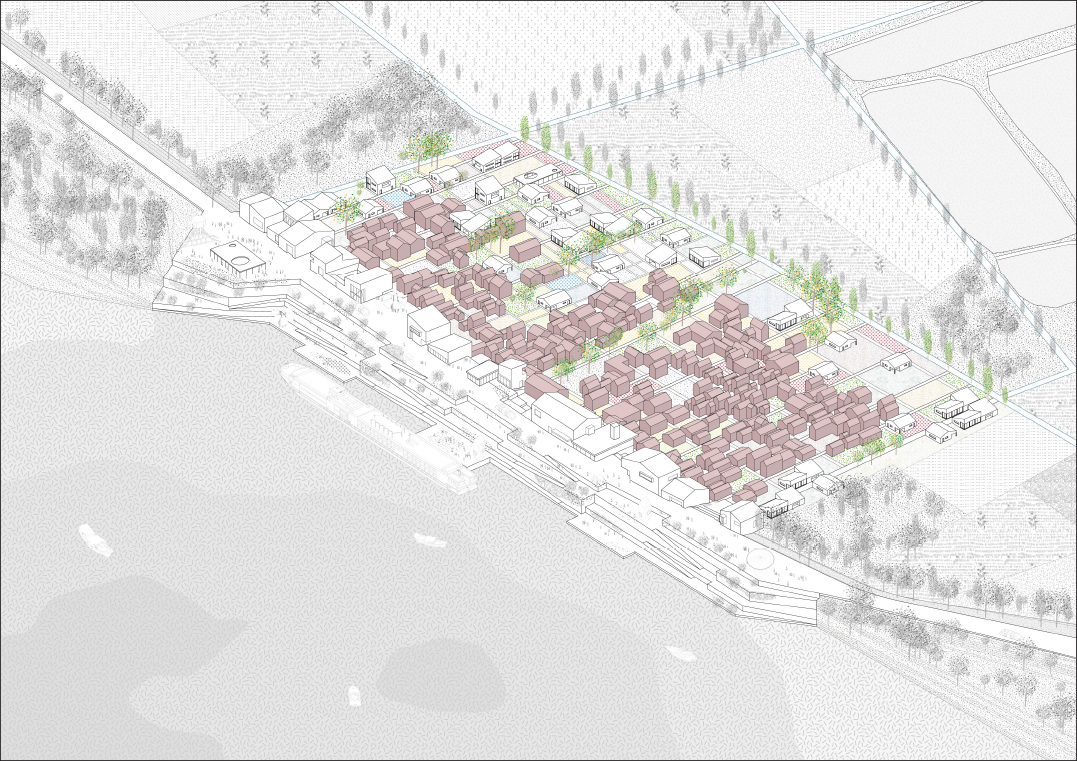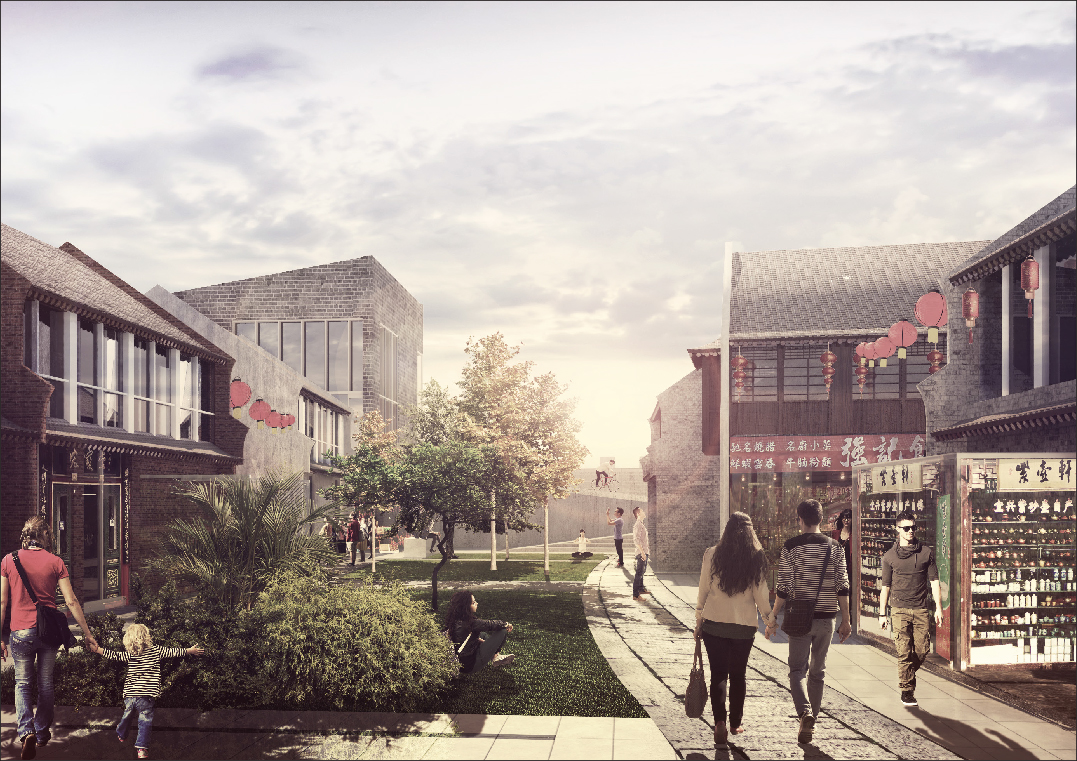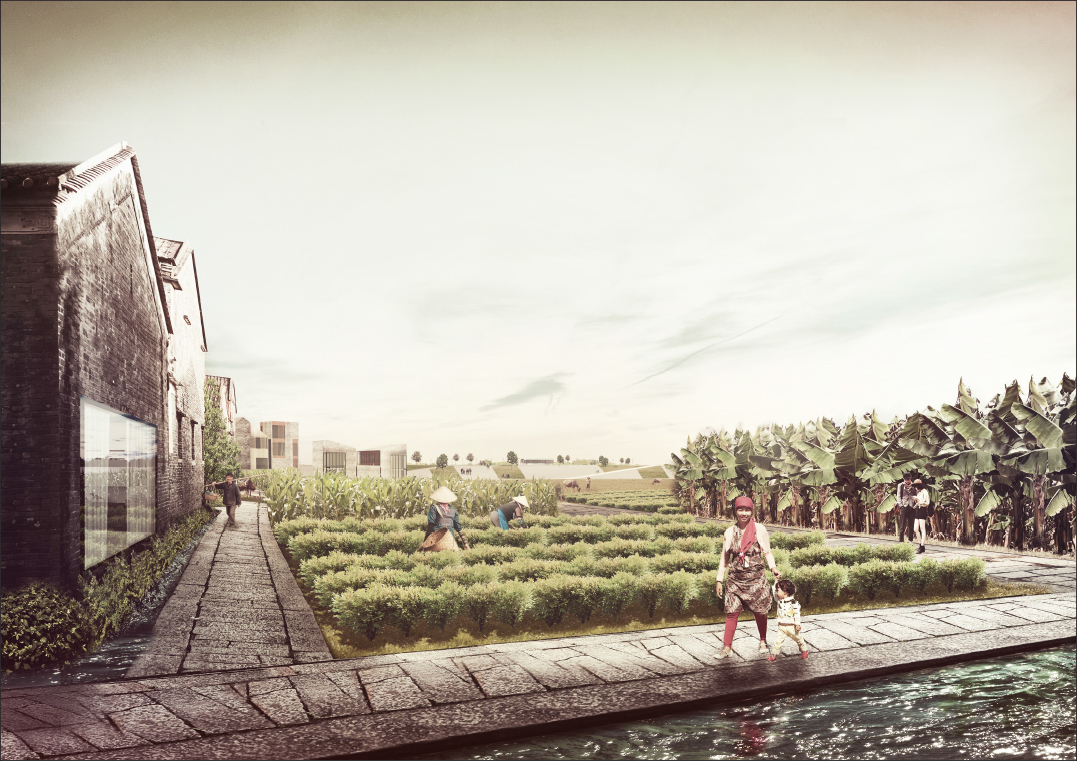APPLIED RESEARCH
Yanzhou Island:
A Well-being Reserve Inside Zhoaqing New Area
2016 – 2017
The plan focuses on the redevelopment of one of the biggest islands of the Pearl River, located within the Zhaoqing New Area, a new town, currently under construction, of 115 square kilometers and an estimated population of 600,000 new inhabitants. The plan transforms the island into a well-being ecological reserve that enhances the local agricultural activities as well as its environmental, historical and cultural value.


CREDITS:
Leading University: Politecnico di Torino (DAD + DIST + China Room research group)
Partner Institutions: Zhaoqing New Area Administration
Principal Investigators: Michele Bonino, Francesca Governa, and Angelo Sampieri
Coordinator: Francesco Carota
Urban Planning and Design: Leonardo Ramondetti, and Astrid Safina
Architectural Design: Mauro Berta, Matteo Migliaccio, Ina Sefjini, Wenwei Yu
Strategic Assesment and Economic Evaluation: Marta Bottero, Federico Dell’Anna
Environmental Evaluation: Elena Comino
Hydraulics Assesment: Maurizio Rosso
MAIN OUTCOME:
Urban Plan: Yanzhou Island: A Well-being Reserve Inside Zhoaqing New Area
Period: September 10th, 2016 – June 25th, 20107
Location: Zhoaqing New Area, Zhaoqing, Guangdong Province
MAIN PUBLICATION:
Ramondetti, L., Safina, A., & Carota, F., (2017). Yanzhou Island: A well-being reserve inside the Zhaoqing New Area. Urban Design, 13, 54-61.


The multidisciplinary design team composed of geographers, urbanists, architects, economists; instead of following the common practice of tabula rasa, followed an approach that enhances the existing elements of the island. Rural villages, mobility infrastructure, economical activities and landscape values are reorganized and upgraded in pursual of a development model focused on environmental and social sustainability. In that sense, the proposal identifies three main areas of interest: a core mostly composed by villages, agricultural areas and fish farming; a fragmented riverbank characterized by fields, small woods and wetlands; and a mobility system mostly made of a perimetral road that contains a dense web of minute pathways.
The proposal deconstructs and reorganizes the three existing parts into three systems each with a peculiar functional structure. The result is a macro-system composed by an agricultural park, a soft perimeter and an infrastructural ring. The agricultural park consists of renewed villages capable of attracting new inhabitants and setting in motion eco-tourism activities, all contained within an extension of traditional crop fields that give value to local production and high value products. The soft perimeter consists of the external embankment that functions as a natural barrier against periodical floods. This perimeter contains a high biodiversity level, thought as a dynamic landscape capable of periodically renewing itself.


Finally, the infrastructural ring consists in the main mobility corridor of the island, but not only. It also works as a shared public space where new facilities and thematic poles are organized, and as the contact point to mainland thanks to the presence of two marinas that allow the access to the island exclusively by boat. Putting a sustainable growth model at the center of the project’s approach was crucial for reflecting on the current Chinese urbanisation that, since 2015, seems to be shifting towards more sustainable practices in order to better relate to urban and rural issues. Initiatives such as the New Socialist Countryside Program, or the Beautiful Village put forward in the search for a new rural future, confirming the logic of improving local rural conditions, starting from existing potentialities. The project operates in that line of thought; hence it offers one possible scenario to the many concerns regarding the new urbanisation in China. One that does not promote an intensive urban development, but instead encourages quality and sustainability over quantity and speed.





